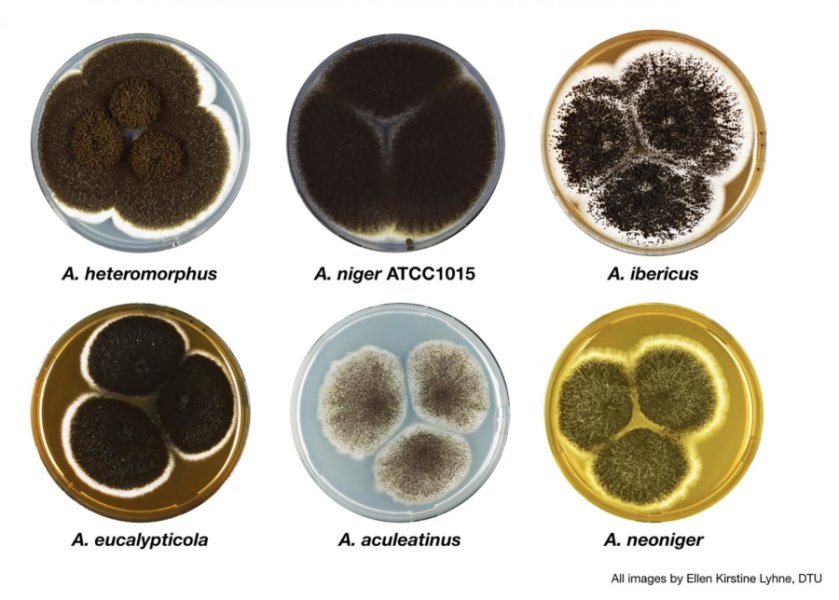CeMiSt researchers behind first large genetic analysis of important type of mold
Researchers from the DNRF’s Center for Microbial Secondary Metabolites (CeMiSt), in collaboration with researchers from the Technical University of Denmark and the United States, have studied mold fungus, and for the first time, the researchers have mapped genomes in 20 species of the section Nigri, which belongs to the Aspergillus species. The fungus Aspergillus plays an important role in a number of different areas, such as human health, agriculture, and industry. The study has been published in the scientific journal Nature Genetics.

Professor with special responsibilities Mikael Rørdam Andersen, Professor Jens Frisvad, Assistant Professor Tammi Vesth, and Professor Thomas Ostenfeld Larsen from basic research center CeMiSt are all part of a large research team from the Technical University of Denmark and the United States that undertook the first large analysis of the group section Nigri, a subgroup of the widespread species of mold fungus called Aspergillus. The species plays an important role in a number of areas, including biotechnology, fermentation, and agriculture, and the study is part of a large and lengthy analytical work on 300 Aspergillus fungi.
Initially, six fungus genomes from the Nigri section were mapped, and in the new study, which has been published in the scientific journal Nature Genetics, the researchers have sequenced 23 more genomes in the section. The work is an important step toward understanding the fungi’s usage potential and creates a basis for further research and comparative studies, both within other species in the Nigri section and within the Aspergillus species in general.
“Comparison within and across a taxonomic section allows us to build a genetic profile for that section, which can be connected to the phenotypes (known characteristics) of the species in the section,” explained Professor Mikael Andersen from CeMiSt, who is the study’s senior author. He continued:
“This is quite useful in many regards, for instance, to identify new, unique enzymes or to link an interesting bioactive compound to the biosynthetic genes. This paves the way for new, sustainable cell factories.”
In the extensive study, the research team discovered thousands of new genes in the fungus. Especially in the Nigri section, the researchers were able to identify species-typical genes related to the microorganisms’ secondary metabolites, gene regulation, and the regulation of proteins. According to Professor Andersen, this study is just the beginning of the exploration of genome profiling in Aspergillus.
“Many more interesting discoveries are on the way; the diversity is enormous, and the potential for bioenergy, biotechnology, and biotherapeutics in each and every species is staggering.”
Read the scientific article at Nature Genetics here.
More information about the study can be found at ScienceDaily here.
